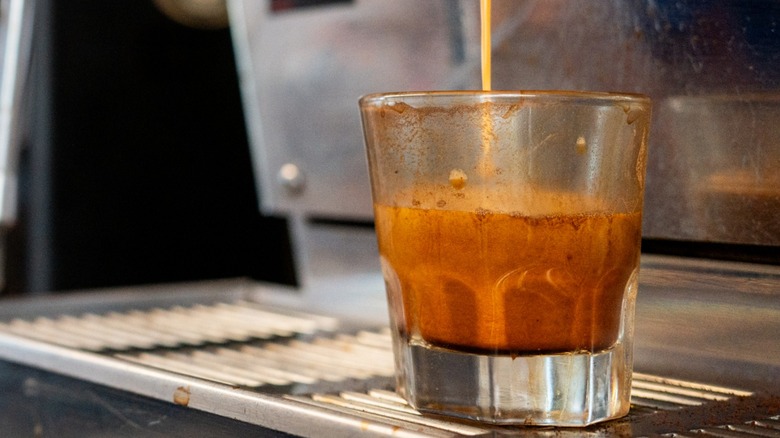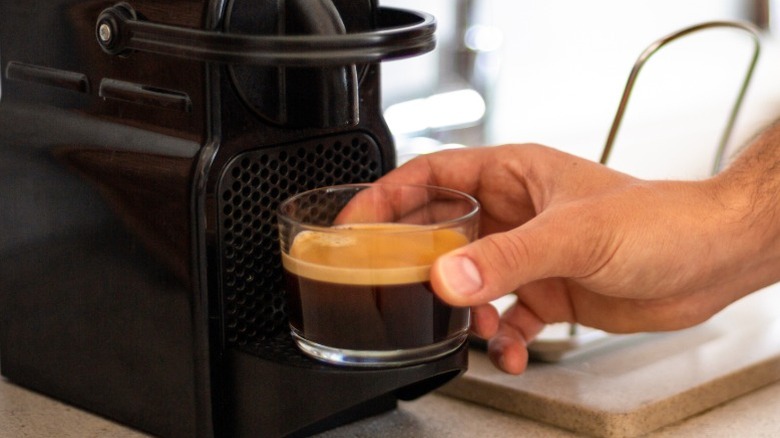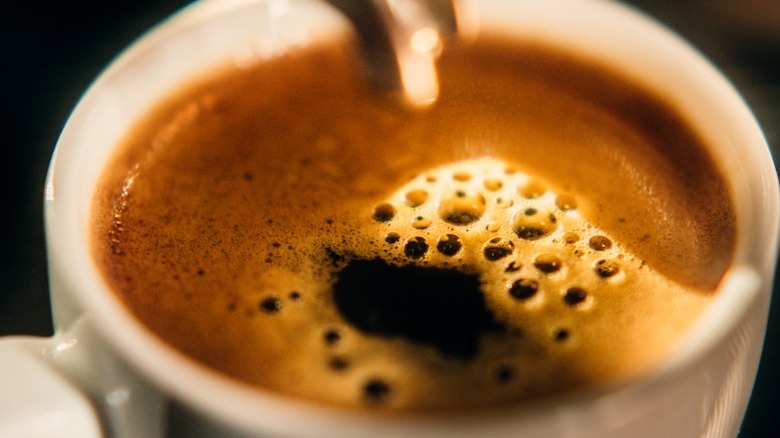What It Means When Espresso 'Dies' And How You Can Prevent It
It's no secret that coffee shop espresso often tastes better than what you make at home. Most of this boils down to knowing the rules — and practicing — how to brew the perfect cup of joe. But it's important to know what to avoid, too. Like "dead" espresso. That's why The Takeout turned to Matt Woodburn-Simmonds, a coffee connoisseur with Home Coffee Expert. "'Dead' espresso is when the flavor oils and compounds have been exposed to the air for too long and have broken down," explains Woodburn-Simmonds. "The flavors disappear entirely, or we start to get 'off notes,' unpleasant flavors caused by the oxidized versions of the flavor compounds."
This oxidation process is a challenge for wines, too, and especially reds. "An espresso will start to oxidize immediately, but at around 10 minutes it is 'dead' and unusable," he says. With such a short lifespan, it's best to enjoy espresso shortly after brewing.
Tips for keeping espresso shots fresh
The secret to keeping espresso — and coffee in general — fresh for as long as possible can be condensed into three important factors: surface area, volume ratio, and temperature. "Espresso oxidizes so quickly because it has a small volume and a relatively large amount of surface area exposed to the air," says Woodburn-Simmonds. "Larger volumes of coffee kept in mugs, coffee pots, or thermal carafes will have less surface area exposed to oxygen compared to the total volume of the coffee, so the oxidation process is slower."
The other big factor to consider is a coffee's climate. "Hotter liquids oxidize faster, so a coffee pot sat at 180 degrees Fahrenheit will oxidize faster than one sat at 160 degrees Fahrenheit," he explains. Compared to a regular drip coffee, espresso has a relatively small window for retaining its flavor and usability. However, even good coffee loses its drinkability eventually. "All coffee will start to degrade as soon as it's brewed," shares Woodburn-Simmonds. "Most will be absolutely fine up to around 30 minutes, and some up to one hour."
How to keep espresso shots from dying
The easiest way to keep espresso alive may sound too good to be true, but it works every time: Enjoy it right after it's been brewed. "Drinking it while it's hot and fresh is the best prevention method and the one I use the most," says Woodburn-Simmonds. This ensures that the complex flavors, mild acidity, and rich texture meet your taste buds in their purest form possible.
However, sipping espresso in 10 minutes or less isn't always an option, especially for coffee shops or breakfast joints that serve specialty coffees. In those scenarios, Woodburn-Simmonds suggests saving "dead" shots for a secondary use instead of pouring them down the drain. "Save any dead espressos for people who are mixing them with so much sugar and syrups that they won't notice the difference," he says. "Maybe someone wanting a blueberry iced latte, for example." Blending the shot with seasonal syrups (Dunkin', we see the rumored new fall latte options!), milk, or cream, and sugars will hide the stale flavors while reducing waste. "You could try and keep the oxygen away from your espresso," explains Woodburn-Simmonds, "but keeping it in a tiny, air-tight container seems insane."


